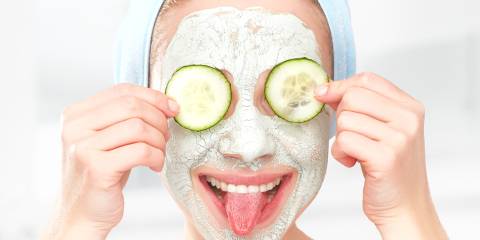Did you know that August is Children’s Eye Health and Safety Month? Whether you’re expecting your first child or already raising your youngsters, you can work toward safeguarding their eye health now and well into the future.
Eye Health Support for Kids
Vitamins for Vision During Pregnancy & Infancy
As early as the first month of pregnancy, the optic nerve, which sends information between the eyes and the brain, begins to develop. Expectant mothers should take prenatal vitamins and incorporate foods rich in vitamin A into their diet. Dark green, leafy vegetables (kale, spinach) and deep yellow and orange veggies (carrots, sweet potatoes) are high in this vitamin, which is crucial for good vision.
After bringing home baby, these foods will continue to be important for supporting eye health. Omega-3 fatty acids (found in fish), vitamins C and E, as well as the mineral zinc may also protect against future eye diseases, including age-related macular degeneration, the leading cause of vision loss in American adults.
Protection from Sunlight
Sunlight, which can enter the womb through a mother’s skin, could also boost eye development. A study on mice reported that the animals’ eyes were healthier if they were exposed to more light in utero.
-
Light Exposure
You may want to treat newborns to bright environments. As early as one month, babies are sensitive to color brightness and intensity. Their least favorite color seems to be brown!
-
Time Outside
Sending older children outside to play in natural light may also help preserve their vision later on. Studies show that kids who play outside regularly are less likely to develop nearsightedness. In fact, one study reported that with each additional hour spent outdoors each week, children were two percent less likely to develop the eye condition. According to the American Academy of Ophthalmology, nearsightedness has become much more common in the United States compared to its rates in the 1970s. Advances in technology are most likely to blame.
-
UV-Blocking Glasses
UV-blocking sunglasses do a lot to protect children’s eyes, and their value should not be underestimated. While quality shades protect eyes from foreign objects, they can also prevent later eye diseases, like cataracts, caused by too much sun exposure.



